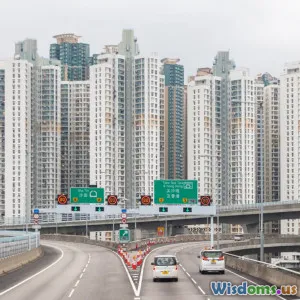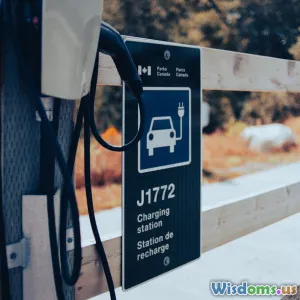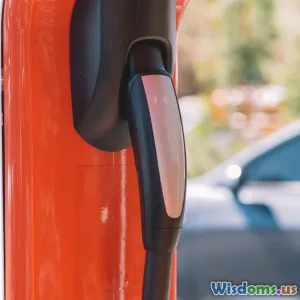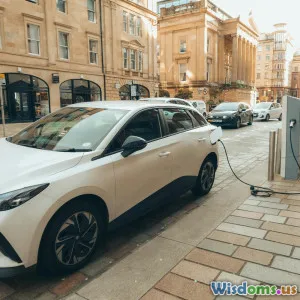
How Smart Roads Are Transforming Urban Transportation Right Now
7 min read Discover how smart roads revolutionize urban transportation with cutting-edge tech enhancing safety, efficiency, and sustainability today. (0 Reviews)
How Smart Roads Are Transforming Urban Transportation Right Now
In the rapidly evolving world of urban transportation, smart roads represent a groundbreaking shift that promises to redefine how cities operate. Imagine streets that communicate, adapt, and respond in real time to traffic conditions, weather, and even the needs of drivers and pedestrians alike. This is not a distant future fantasy, but a fast-approaching—and in some cases, already realized—technological evolution revolutionizing mobility today.
Understanding Smart Roads: The New Backbone of Urban Mobility
Smart roads leverage cutting-edge technologies like Internet of Things (IoT) sensors, embedded communications systems, artificial intelligence, and renewable energy to collect, analyze, and respond to data for improving transit efficiency, safety, and sustainability.
Unlike traditional roads, smart roads can monitor traffic volumes, vehicle speeds, weather conditions, and even communicate directly with connected vehicles. For example, in Pittsburgh, the city turned some of its streets into ‘smart corridors’ equipped with dynamic LED-lit lane markers controlled by sensors to modify traffic flow based on real-time conditions.
Real-Time Traffic Management and Flow Optimization
One of the most impactful ways smart roads are transforming urban transportation is through dynamic traffic management. By collecting data from embedded sensors and connected vehicles, these systems can:
- Alleviate congestion: Traffic signals adapt timings to traffic volumes, minimizing stop-and-go waves that cause delays.
- Detect incidents quickly: Sensors identify accidents or stalled vehicles and alert authorities in seconds, allowing rapid responses.
- Enable smart routing: Integration with navigation apps to suggest least-congested routes for drivers.
A standout example is the Dutch city of Rotterdam, where the city’s smart road network uses an extensive sensor array to synchronize traffic lights dynamically. This integration has reduced traffic delays by up to 20%, according to a 2022 Municipal Transport Report.
Enhancing Safety Through Intelligent Infrastructure
Safety improvements are a vital benefit smart roads deliver. These roads use AI-powered cameras and sensors for:
- Pedestrian detection: Crosswalk lights respond to waiting pedestrians with variable message signs, increasing awareness for drivers.
- Hazard warnings: Road surfaces embedded with sensors can detect icy patches or debris and communicate warnings to vehicles.
- Vehicle-to-infrastructure (V2I) communication: Today, some smart streets send alerts to vehicles approaching intersections about red light timing, reducing chances of collisions.
For instance, Toyota partnered with the city of Las Vegas to pilot a smart intersection enabling cars to receive real-time traffic light changes via V2I tech—resulting in a 30% reduction in intersection-related crashes during the trial.
Environmental and Energy-Saving Innovations
Smart roads are not just about traffic and safety—they play a crucial role in advancing clean and sustainable urban transport:
- Energy harvesting: Solar panels embedded in asphalt or roadside can help power streetlights or electronic signs.
- Smart lighting: Streetlights adjust brightness based on pedestrian or vehicular presence, saving energy.
- Adaptive speed limits: Dynamic speed controls optimize fuel efficiency by reducing braking and acceleration cycles.
A pioneering project in France installed transparent solar roads to generate green energy while serving normal traffic functions, putting renewable energy directly into the heart of city infrastructure.
Supporting the Future of Autonomous and Connected Vehicles
Smart roads lay the foundation for widespread autonomous vehicle (AV) integration. Self-driving cars rely heavily on environmental data beyond their sensors, and smart infrastructure closes crucial gaps. Features include:
- Precise localization: High-definition maps and real-time lane adaptations.
- Communication: V2I systems provide AVs with instant data on hazards and traffic conditions.
- Charging infrastructure integration: Smart roads can incorporate wireless charging pads for EVs.
The South Korean city of Sejong is a global leader, experimenting with smart-road sections that wirelessly charge electric buses on the move, showcasing a seamless blend of infrastructure and vehicle tech.
Challenges and the Road Ahead
Despite their promise, smart road systems face hurdles. High installation and maintenance costs demand significant investment. Cybersecurity is critical as connectivity increases vulnerability to hacking. Additionally, universal standards and regulations lag behind rapid tech advancements, hindering broader adoption.
Continued pilot programs and public-private partnerships are vital. Cities like Singapore, London, and Amsterdam are actively developing policies and infrastructure, recognizing that smart roads are essential for future-ready urban mobility.
Conclusion: Toward Smarter, Safer Cities
Smart roads are not a futuristic concept but a present reality already enhancing urban transportation. By integrating real-time data, advanced communication, and sustainable technologies, smart roads reduce congestion, improve safety, save energy, and support autonomous vehicle ecosystems.
As infrastructure evolves, these intelligent systems shape smarter, safer cities—inviting stakeholders to invest, collaborate, and embrace innovation. The road ahead is smart, dynamic, and promising a transformation no urban commuter should ignore.
References:
- Pittsburgh Smart Corridor Project: City of Pittsburgh Transportation Department (2023)
- Rotterdam Smart Traffic System Annual Report (2022)
- Toyota & City of Las Vegas V2I Pilot Study (2021)
- French Solar Road Initiative (2019)
- South Korean Wireless Charging Road Project, KOTI (2022)
Author’s Note: Urban planners, technology firms, and policymakers must prioritize smart road investments to harness their full potential for sustainable mobility futures.
Rate the Post
User Reviews
Popular Posts



















